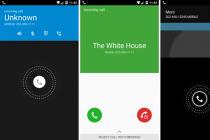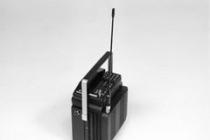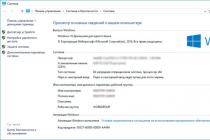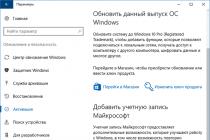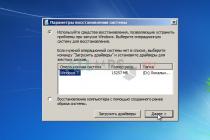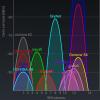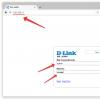There are many reasons why a laptop won't connect to a Wi-Fi network. In this article, you will find a guide on how to solve the main options for this problem.
Why the laptop won't connect to Wi-Fi
The most common problems with connecting to a wireless network occur in the following cases:
- the router settings are incorrectly set (knocked down);
- the Wi-Fi adapter on the laptop is deactivated;
- the driver for the wireless adapter is missing or damaged;
- the laptop's Wi-Fi module is out of order;
- operating system crashes.
My laptop won't connect to Wi-Fi - what should I do?
It is worth noting that most often problems with connecting to a wireless network lie in incorrect router settings. It is his parameters that should be checked first.
Check router operation
First, make sure the router is online and active. Then check if other devices can see the network that the router creates. Use for this purpose, for example, a smartphone or another laptop.
If other gadgets also cannot detect the network, then most likely the Wi-Fi connection is deactivated on the router.
The first thing to do in this case is to simply reboot the router and test it again.
If there are no changes, then do the following (considered on the example of a DSL router):
- connect to the router using the cable that came with it;
- go to any browser and enter 192.168.0.1 or 192.168.1.1 in the address bar and press Enter;
- in the authorization window that appears, in the “Username” and “Password” fields, enter the word admin and click the “Login” button;

- go to the "Configure Wi-Fi" tab;

- make sure the checkbox "Enable wireless connection" is checked, then click "Next";

- if necessary, make the connection settings (to find out the exact parameters, contact your provider);

- don't forget to save your changes at the end.

Laptop sees Wi-Fi but won't connect
The situation is a little different in the case when the laptop sees Wi-Fi, but does not connect to the network. The following are ways to fix this problem.
Make sure to enter the correct password
Probably one of the simplest options that can occur in this situation is entering an incorrect password. Make sure the password you enter when trying to connect is correct.
In case you have forgotten your password, you can easily recover it, to do this, do the following:
- connect to the web interface of the router as described above, but this time select “Configure manually” from the menu;

- then go to the Wi-Fi tab;

- select the "Security Settings" tab;

- the line "PSK encryption key" will contain your current password, which, by the way, can be changed here.

Check your MAC filter settings
The MAC filter is a special service that filters out devices trying to connect to a wireless connection. Sometimes such a service can be the reason why the laptop sees Wi-Fi, but does not connect to the network. To solve the problem, you can try to disable the MAC filter.
Process for disabling the MAC filter for a DSL router:

Check the Wi-Fi module of the laptop
If everything is in order with the router and other devices can easily connect to it, then you need to deal with the laptop itself.
First of all, check that the laptop's Wi-Fi module is turned on. Depending on the laptop model, a certain combination of function keys may be responsible for activating the module, for example, Fn + F5, or a special switch that is located on the body of the gadget.

Make sure the Wi-Fi adapter driver is working correctly
If the wireless module is active, but the laptop does not connect to Wi-Fi, then the driver of the Wi-Fi adapter should be checked.
To do this, use the following instruction:

If there is an exclamation mark next to the module, it means that the driver or the device itself is not functioning correctly. Double click on the adapter and check the error in the window that appears.
The easiest way to solve this problem is to uninstall the current driver, reboot the system and install the driver again.
Correct the wireless settings
If your laptop sees Wi-Fi, but does not connect, and you have already tried the above solutions, then you should check the wireless settings.
Instructions:

After these manipulations, try connecting to the wireless network again.
37,797 Tags:If Android does not connect to WiFi, then most often the user sees the message "Obtaining an IP address" or the notification "Authentication failure". Another common connection error - Android writes "Saved, WPA / WPA2 protection", but does not go online.
This article is suitable for all brands that produce phones on Android 10/9/8/7: Samsung, HTC, Lenovo, LG, Sony, ZTE, Huawei, Meizu, Fly, Alcatel, Xiaomi, Nokia and others. We are not responsible for your actions.
Attention! You can ask your question to a specialist at the end of the article.
Possible causes of failure
If Android cannot connect to Wi-Fi - for example, instead of an active Wi-Fi icon, you see a gray button and an exclamation mark icon - then the reason for this may be:
- Incorrect from wifi.
- Setting an unsupported security type or wireless standard in the router settings.
- Problems with Android firmware.
The first step is to understand which device is experiencing problems. If only your phone is not connected to the point, then the reason should be sought in its settings and firmware. If the wireless network is not found by any device, then you should check the settings of the router.
Obtaining an IP address message
If, when you try to connect, a message appears with the text "", but the connection is not established, then the reason for this may be the DHCP server being disabled in the router settings or Android problems. A simple reboot of the router can help.
If the DHCP server fails, restarting the device will fix it. When saving the error:
- Open your router settings.
- Make sure the DHCP server is enabled.
Depending on the router model, the order of enabling / disabling DHCP may vary, so you need to look for instructions for your device.
Authentication error
If connection authentication fails, then the problem is most likely due to an incorrect Wi-Fi password. To fix the error:
- Forget the wireless hotspot on your phone / tablet.
- Reboot your router.
 Increase
Increase - Change your password using only Latin letters and numbers.
- Make sure WPA2-PSK is selected for network authentication.
 Increase
Increase If the phone does not support the WPA2-PSK standard, then select another mode - WPA, WPA2. It is clear that you cannot do this in the metro or a shopping center, so you just have to put up with it. But at home or in a hotel, you can access the router and check the parameters of the wireless network.
Saved, WPAWPA2 protection
If the connection is made without a password, then there can be no authentication error. However, there is another situation - the network is saved, but. Restarting the router usually helps, but sometimes you have to go deep enough into the settings.
 Increase
Increase Also, look at the number of devices allowed. If it is "0", then there are no restrictions.
Network Discovery Problems
If, then changing the region and channel usually also helps. If Russia is selected in the settings, the router automatically connects to channels from 1 to 13. However, some devices do not support channels greater than 10 - this is how an error appears. To fix it:
- Put the US region - it only has 10 channels.
- Change the channel manually to one of the range 1-10.
If that doesn't work, make sure other devices can see the network. Perhaps the cause of the problem should be looked for in the operation of the Wi-Fi module on Android.
There are many reasons why the phone won't connect to wifi. Mobile phones are capable of providing us with Internet access wherever we are.
However, sometimes it turns out that the phone has stopped connecting to a non-wifi network.
In most cases, the smartphone tells us what the problem is by displaying typical notifications on the screen.
Sometimes, when the connection indicator shows that the phone is connected to the wi-fi, it still does not work to access the Internet, the pages do not load.
In this case, it makes sense to look for the notification "" in the network settings, which often appears in such cases.
In this case, you can try to solve the problem in two ways. Often this problem occurs due to the fault of the router.
Most likely, from whatever device you tried to connect to this network at this moment, from a laptop or tablet, the result would be the same.
- The simplest solution is to try turning the router off and on again. Let it cool down for about 10 minutes and try to connect again. It is likely that the problem will be fixed.
In addition, this notification may appear if the Internet has not been paid for at home. This problem is also quite solvable. - If the Internet is paid for, the wifi router was turned off and on again, but you still cannot access the Internet, then the problem is most likely from the operator, and therefore it is worth calling customer support.
Sometimes this will have to be done even if it is not possible to access the Internet only from the phone, although it can be done from other devices.
Important! Regardless of what connection problem and by what method you solve, after taking measures, you must turn off the connection on the device. Then turn it back on to check if it works.
Obtaining an IP address ...
Another common problem arises during the very process of connecting the phone to a wifi router. The connection process stops when the phone tries to obtain an IP address.
The notice “Obtaining an IP address…” can appear next to the network name for hours. Naturally, you cannot go online, since the phone is not connected to it.

- The problem is not solved as easily as the previous one. However, the first step is the same - turn the router off and on again after 10 minutes. If after that it was not possible to connect, go to the second step.
- Not the most convenient way is to register a static IP address on the device. You actually prescribe the parameters of the network to which you connect at home.
However, when using this method, there will be problems with accessing the Internet through other networks. In order to do this, you will have to erase the IP address and change its type.
You can register a static address as follows:
- When you click on the name of the wifi network, an item with the name "Advanced settings", "Additional parameters" or the like will appear in the window that opens;
- Check the box next to this item;
- After that, in the "IP Settings" or "IP Settings" section, change the type of network protocol (DHCP) to static and write down the IP.

Change the protocol type from static to automatic again before trying to connect to the Internet over a different network.
Authentication error
A common reason why you can't connect to the internet.
This notification that the phone gives after trying to connect to a wifi network at home actually means that the network did not recognize your device as suitable for wifi reception.
The most common reason why this happens is because the network password is incorrect. Check it carefully and try going online again. If you are sure that the password is correct, proceed to the next step.

- This is a familiar piece of advice. Try turning the router off and on again after a few minutes. This is a universal recommendation that even customer support operators give.
- A more difficult way is to try making changes to the router settings. To do this, you need to go to the page of its settings through the browser.
Select the following information in the router settings. WPA-PSK version, encryption - AES. Enter your password.
On most routers, these should only be numbers, no more than 8 pieces. We set the protection mode WPA \ WPA 2 to personal.
These parameters make connecting to wifi as easy as possible. However, such actions are necessary only when nothing else has helped.
In addition, there is reason to believe that there are compatibility problems, for example, the type of encryption used by the router and the phone. 
Saved, WPA \ WPA2 Security
This problem is one of the most common reasons why the phone does not connect to wifi. It's worth starting with a traditional router reboot. However, in this case, it rarely helps.
You need to make changes to the router settings. To do this, open the settings page in any browser.

Make sure the set region is correct or change it if necessary. If the problem is in encryption, then you need to repeat the same steps as in the case of an authentication error.
Set the options that will make the process of connecting to the network as easy as possible.
Some problems with connecting to wifi can be fixed by simply deleting the old connection and finding this network on a new one.
You can also try restarting your phone, as connection problems are often caused by a minor glitch in the device's internal settings.
This is especially true if the phone suddenly stopped connecting.
Often the 3G network interferes with the connection to the router.
All steps described in the article should be performed only if you are an experienced user.
Otherwise, it is better to contact the operator's customer service for help, since your mistake can cause more serious problems in the system.
HOW TO CONNECT ANDROID TO WIFI / WHY IS THE PHONE NOT CONNECTING TO THE NETWORK?
Major Issues: Why the Phone Won't Connect to WiFi
I was always a little surprised by similar questions, in which they wrote that when connected to an open (unprotected) Wi-Fi network, the Internet does not work. Or a phone, laptop, tablet and other devices refuse to connect to open Wi-Fi at all. They asked for some advice on what can be done to solve this problem.
And today, I saw on our forum a message that says that the phone catches unpaired Wi-Fi, connects to it without problems, but the Internet does not work. Then I analyzed the comments on the site a little, and I realized that the question is very popular, and I have not written articles on this issue yet. I will correct the situation now 🙂.
Now, we will figure out why there are problems connecting to foreign, albeit open, wireless networks. We will try to find out if something can be done about it, and if so, what.
I want to write right away that we will consider the problems with the connection and operation of the Internet connection, through foreign, wireless networks that are not password protected, and with which you can establish a connection.
All the problems that arise when connecting to your own networks are another story. There will simply be more ways to solve this or that error, since you have access to the settings of the router itself.
As sad as it may sound, but if your smartphone, tablet, laptop, etc., does not want to connect to open Wi-Fi, or the Internet does not work after connecting, then most likely, somehow, you will not work out. Somewhere in 90% of cases, you will have to deal with it. Somehow I wrote sadly 🙂.
Why? Yes, because we do not know what kind of access point is there, whose it is, how it is configured, and most importantly, we do not have access to the settings of this router, because it is not ours, but a neighbor's, some store, cafe and etc. This I think is understandable and logical.
For example, let's take the question I wrote about at the beginning of the article:
It was left on our forum, in this thread:.
It's a good question, but do you think you can essentially answer this question? I also think not. Maybe it's just that the Internet is not paid for. There is a connection, but the Internet does not work. Standard situation. Maybe there is some kind of blocking turned on, or the phone did not like the channel on which it works.
I would highlight two main problems. On them, we will divide the article. It will be easier and clearer this way.
Can't connect to an open Wi-Fi network
This is probably the most popular question. On laptops (and stationary computers), it could be an error "", or something else.
On mobile devices (phones, tablets), it could be ... ” (by the way, with laptops this problem may also be “Identification ...”), "". There may be other errors as well.
If you cannot connect, then you need to think about why this network is not protected. Yes, there are people who just forget to do it, or they don't need it. They just let everyone use their internet. (this is the case with home access points)... But, I am sure that in most cases, there is no password because MAC address filtering is enabled there (read). Which protects even better than a password.
What can you try to do?
Typically, when connected to unsecured networks, the signal strength is not very good. See that the network level is at least two divisions. Otherwise, connection problems may arise precisely because of a weak signal.
If, you connect a laptop (regular computer with adapter), then make sure that in the properties of the wireless adapter, in the IPv4 protocol, it was set to receive IP automatically. Like this:
I showed it using the example of Windows 7. In Windows 8, everything will be exactly the same.
If the problem is observed on mobile devices that run on Android OS, or iOS (iPhone, iPad), then I don't even know what to advise. Except how to monitor the signal level. There seem to be no special settings that would interfere with the connection.
Internet does not work when connected to unsecured Wi-Fi
Well, the second problem is when everything is connected, but the Internet does not work.
On a laptop, there will be a status “No Internet access” and a yellow triangle next to the network status (c), but on mobile devices the Internet will simply not work, and the Wi-Fi icon will most likely be gray instead of blue (depends on OS, firmware version, etc.).
How do I fix the problem?
If the problem is on the computer, then check the IP settings, as I showed in the screenshot above. Disable antiviruses and firewalls, they can block access to the Internet.
If the problem is on a mobile device, then check if manual proxy settings are enabled. How to do this, I wrote in the article (after the heading “check if the proxy server is disabled”).
In other cases, the problem is most likely on the side of the router itself. Or, your device cannot work with the parameters that are specified in the router settings.
Afterword
As I wrote above, if the phone does not connect to the network, then you are unlikely to be able to do something. If it connects, but there is no Internet access, then exactly the same. The network is not ours, we do not know what it is with it, it cannot change the settings. Almost all problems that arise with Wi-Fi are to blame for the access points themselves. And, if you try to fix something, then you need to change the settings in them. Provided that your device works fine with other networks.
If you have anything to add on this issue, then you can do it in the comments below. There, you can leave your questions.
Wireless technologies are no longer surprising. They have so deeply entered the life of modern people that it is already difficult to imagine life without them. But the usual is not always easy: from time to time, everyone is faced with such a problem when the laptop does not connect to it sees WiFi, but sees the network, and there is no access to the Internet. This can happen for various reasons: we will look at the most common problems and their solutions.
Common Causes
It should be understood that the problem when the computer sees but does not connect to Wi-Fi can be both on the side of the PC and the router. Therefore, you should always check your network first. To do this, just try to connect other devices to the router, for example, a smartphone or tablet. If other gadgets connect to the router without problems, then most likely the problem is on the PC side.
Do not forget about the technical characteristics. For example, we know that Wi-Fi standards are different and they are denoted by a letter. There are quite a few of them, but three main ones are used in everyday life:
- 802.11b - opened in 1999. To broadcast the signal, a frequency of 2.4 GHz is used. The maximum data transfer rate is 11 MBytes.
- 802.11g - opened in 2003 and operates at 2.4 GHz. However, the speed has been increased to 54 MB.
- 802.11n is the most modern and fastest standard and operates at 5 GHz. The maximum connection speed can be up to 300 MB
As you can see, the standards operate at different frequencies. In theory, 802.11n can work at 2.4 GHz, but this often causes various problems. Therefore, ideally, the standards on the sending and receiving devices should be the same. Nowadays, the vast majority of routers work with all three modes at once, but not all router models support this. Therefore, it is worth checking the specifications.
Sometimes connection problems can be caused by data encryption. That is, if you put a password on your wireless network, then the router encrypts the data according to a certain scheme. Sometimes it happens that the computer simply does not support the type of data encryption that is installed in the router and cannot decode the signal. Therefore, it is worth trying to remove the password for the wireless network in the router settings and check if the PC connects to the open network. To do this, go to the router settings, go to the "Wi-Fi Security" section and disable protection here.
If the PC connects to an open network, then the matter is in data encryption or in the password itself. Therefore, to protect your network, go back to the router settings and set the encryption type to WPA-PSKWPA2-PSKmixed - almost all devices support this mode.
These were the main parameters. Now let's look at what causes the problem when a laptop sees a Wi-Fi network, but cannot connect.
Computer side problems
If it so happens that an error appears when you try to connect to the Wi-Fi, then first of all you need to diagnose the problems. This will allow you to understand what the problem is and in which direction to "dig".
How to connect Wi-Fi on a laptop using troubleshooting:
- We find the Wi-Fi icon in the notification area (the so-called system tray in the lower right corner of the desktop).
- Click on the icon with the right mouse button and select "Troubleshooting".
- Then carefully read the information on the screen and follow all the recommendations. Eventually, the system will try to fix the problem. But even if the problem cannot be resolved, a report will appear at the end of the diagnosis, which will indicate the problem.
If the troubleshooting did not help, then go to the second method. Here you should pay attention to the signal level. If the signal is weak (1-2 sticks), then the PC may not connect to the network. This happens due to too much loss of data packets (the response time is exceeded and the connection is disconnected). Therefore, if the signal is weak, move the laptop closer to the access point.
Also, the computer may have various network failures, as a result of which it sees the network, but does not connect to Wi-Fi. This may be due to a large amount of accumulated cache or as a result of some settings, installation of programs that have access to change adapter parameters, and so on. All this can be solved in one universal way - resetting network parameters... After the reset, you need to restart your computer.
Problems on the side of the router
As a rule, in the event that the router does not connect, it is the settings that need to be checked. We have already covered the Wi-Fi standards and the type of data encryption above - check them first. It is recommended to set Wi-Fi 802.11 bgn mixed mode. It's the same with the encryption type. If everything is fine with these settings, but the router still does not allow devices to connect, then you should restart it. Unplug it from the outlet for at least 5-7 minutes, and then plug it back in.
If this does not help, but you should reset the router to the factory settings. This can be done by pressing and holding the dedicated Reset button or through the options: System Tools> Factory Defaults.

